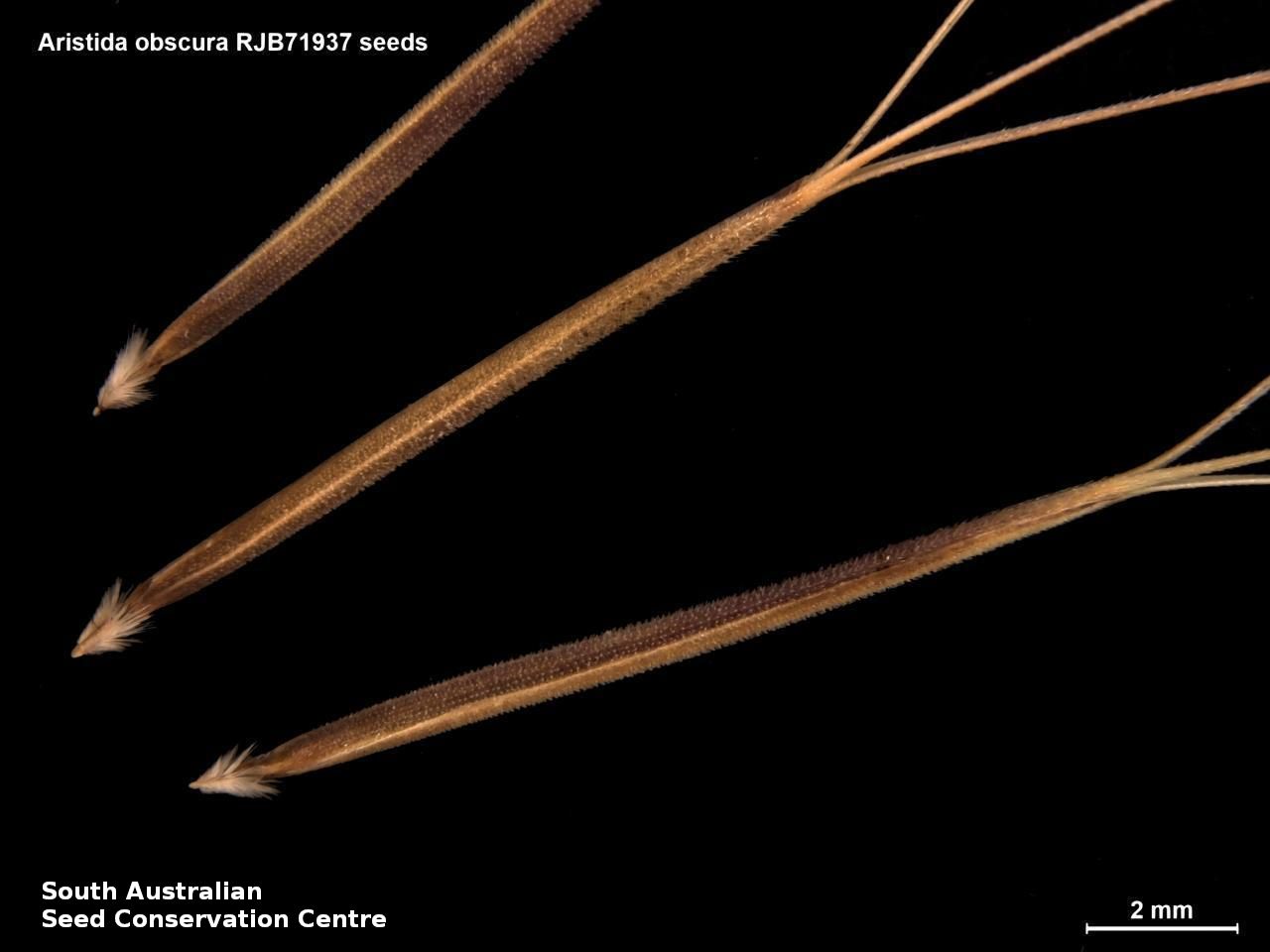


Common names
Small Brush Wire-grass
Brush Three-awn
Etymology
Aristida from the Latin 'arista' meaning awned, alluding to the awned lemma. Obscura from Latin meaning dark, referring to the dark-coloured spikelets.
Distribution and status
Found in the far north-west corner of South Australia. Also found in Western Australia, Northern Territory, Queensland and New South Wales. Native. Common in South Australia. Common in other states.
Herbarium region: North Western
NRM region: Alinytjara Wilurara
AVH map: SA distribution map (external link)
Plant description
Tufted perennial grass to 54cm tall with leaf blades flat to convolute, up to 15cm long and 1.5mm wide. Inflorescence loose and contracted to open, to 15cm long and almost as wide. Glumes 1-nerved unequal, the lower about two-thirds the length of the upper; aristulate, the lower c. 8 mm long, the upper c. 13.5 mm long; lemma c. 12 mm long (including the callus of c. 1 mm long); convolute, densely tuberculate-warty. Awns filiform 30-35 mm long, subequal, the laterals shorter by 1-3 mm. Fruits are dark brown with three unequal awns much longer than the base. Seeds are long pale grain to 10mm long and less than 1mm wide. Seed embryo type is lateral.
Seed collection and propagation
Collect seeds between May and September. Use hands to gently strip seeds off the mature seed spike that are turning straw colour. Mature seeds will come off easily. Alternatively, you can break off the whole seed spike. Place the seeds/spike in a tray and leave to dry for two weeks. No further cleaning is required if only seed collected. If seed spikes collected, use hand to strip off the mature seeds. Store the seeds with a desiccant such as dried silica beads or dry rice, in an air tight container in a cool and dry place. From one collection, the seed viability was average, at 70%.
| Location | No. of seeds (weight grams) | Number of plants | Date collected | Collection number Collection location | Date stored | % Viability | Storage temperature |
|---|---|---|---|---|---|---|---|
| BGA MSB | 2,000 (5.6 g) 2,000 (5.6 g) | 30 | 18-May-2007 | RJB71937 North Western | 1-Aug-2007 | 70% | -18°C |
Number of plants: This is the number of plants from which the seeds were collected.
Collection location: The Herbarium of South Australia's region name.
% Viability: Percentage of filled healthy seeds determined by a cut test or x-ray.